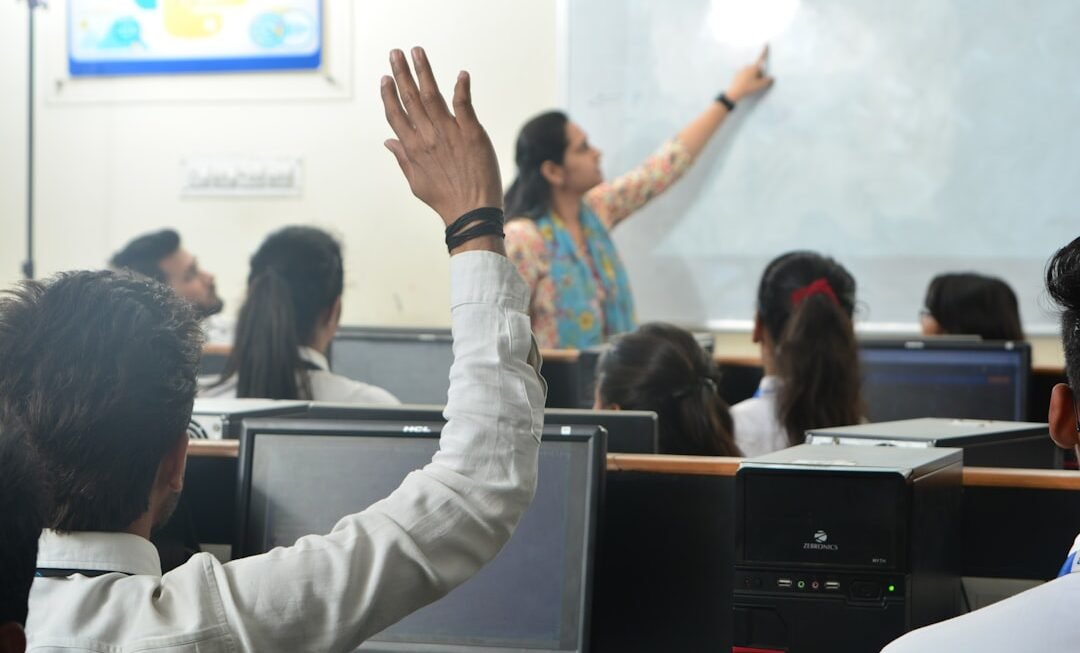As we navigate through the complexities of the 21st century, online teaching methods have evolved significantly, particularly by 2025. The rapid advancement of technology has transformed traditional educational paradigms, leading to innovative approaches that cater to diverse learning needs. In this digital age, educators are no longer confined to conventional classrooms; instead, they leverage a plethora of online platforms and tools to enhance the learning experience.
The shift towards online education has been accelerated by global events, such as the COVID-19 pandemic, which necessitated a swift transition to remote learning. This transition has not only highlighted the importance of flexibility in education but has also paved the way for new methodologies that prioritize engagement, accessibility, and personalization. In 2025, online teaching methods encompass a wide array of strategies that integrate technology into the learning process.
These methods are characterized by their ability to adapt to various learning styles and preferences, making education more inclusive than ever before. From artificial intelligence-driven platforms to immersive virtual reality experiences, the landscape of online education is rich with possibilities. As we delve deeper into the various facets of online teaching methods, it becomes evident that the future of education is not just about delivering content but about creating meaningful learning experiences that empower students to thrive in an increasingly digital world.
Key Takeaways
- Online teaching methods in 2025 are evolving to incorporate advanced technologies such as AI, personalized learning, gamification, virtual reality, and social media.
- The rise of artificial intelligence in online education is revolutionizing the way students learn, with AI-powered tools providing personalized learning experiences and adaptive technology.
- Personalized learning and adaptive technology are shaping the future of online education, allowing for customized learning paths and individualized support for students.
- Gamification and interactive learning are enhancing student engagement and motivation in online education, making learning more enjoyable and effective.
- Virtual reality and augmented reality are transforming online education by providing immersive and interactive learning experiences, bringing learning to life in new ways.
The Rise of Artificial Intelligence in Online Education
Artificial intelligence (AI) has emerged as a transformative force in online education, revolutionizing how educators deliver content and how students engage with learning materials. By 2025, AI technologies have become integral to educational platforms, providing personalized learning experiences that cater to individual student needs. Intelligent tutoring systems utilize machine learning algorithms to analyze student performance and adapt instructional materials accordingly.
For instance, platforms like Carnegie Learning employ AI to assess a student’s understanding of mathematical concepts and offer tailored exercises that target specific areas for improvement. This level of customization not only enhances student engagement but also fosters a deeper understanding of the subject matter. Moreover, AI-driven chatbots have become commonplace in online education, serving as virtual teaching assistants that provide immediate support to students.
These chatbots can answer questions, offer resources, and guide learners through complex topics at any time of day. Institutions such as Georgia State University have implemented AI chatbots to assist students with administrative tasks and academic inquiries, resulting in improved student satisfaction and retention rates. The integration of AI in online education not only streamlines administrative processes but also allows educators to focus on higher-order teaching tasks, such as fostering critical thinking and creativity among students.
Personalized Learning and Adaptive Technology
Personalized learning has gained significant traction in online education by 2025, driven by advancements in adaptive technology. This approach tailors educational experiences to meet the unique needs and preferences of each learner, allowing for a more effective and engaging learning journey. Adaptive learning platforms utilize data analytics to monitor student progress and adjust content delivery in real-time.
For example, platforms like DreamBox Learning provide personalized math instruction by analyzing a student’s responses and adapting the difficulty level of subsequent questions based on their performance. This ensures that students are neither bored with material that is too easy nor overwhelmed by content that is too challenging. The emphasis on personalized learning extends beyond academic performance; it also considers students’ emotional and social needs.
By incorporating elements such as learner profiles and interest inventories, educators can create a holistic view of each student, enabling them to design interventions that resonate on multiple levels. Schools and universities are increasingly adopting these personalized approaches, recognizing that fostering a sense of agency in learners leads to greater motivation and success. As a result, students are empowered to take ownership of their educational journeys, leading to improved outcomes and a more profound connection to their studies.
Gamification and Interactive Learning
Gamification has emerged as a powerful tool in online education by 2025, transforming traditional learning experiences into engaging and interactive adventures. By incorporating game-like elements such as points, badges, and leaderboards into educational content, educators can motivate students to participate actively in their learning processes. Platforms like Kahoot! and Classcraft exemplify this trend by allowing teachers to create interactive quizzes and challenges that foster competition and collaboration among students. This approach not only makes learning more enjoyable but also encourages students to take risks and explore new concepts without the fear of failure. Interactive learning environments have also gained prominence as educators seek to create immersive experiences that promote critical thinking and problem-solving skills. Virtual simulations and role-playing scenarios allow students to apply theoretical knowledge in practical contexts.
By 2025, such interactive methodologies have become essential components of online curricula across various disciplines, enhancing student engagement and retention while preparing them for real-world challenges.
Virtual Reality and Augmented Reality in Online Education
The integration of virtual reality (VR) and augmented reality (AR) into online education has opened up new avenues for immersive learning experiences by 2025. These technologies allow students to explore complex concepts in ways that were previously unimaginable. For example, VR can transport learners to historical sites or distant planets, providing them with firsthand experiences that deepen their understanding of the subject matter.
Platforms like Oculus Education have developed VR applications specifically designed for educational purposes, enabling students to engage with content in a three-dimensional space that fosters exploration and discovery. AR complements this immersive experience by overlaying digital information onto the physical world, enhancing real-time interactions with educational materials. For instance, AR applications can bring static textbooks to life by displaying interactive 3D models or animations when viewed through a smartphone or tablet camera.
This technology has been particularly effective in fields such as biology and engineering, where visualizing complex structures is crucial for comprehension. By 2025, the use of VR and AR in online education has not only enriched the learning experience but has also bridged the gap between theoretical knowledge and practical application.
The Role of Social Media and Online Communities in Education
Social media platforms have become vital tools for fostering collaboration and communication among students and educators by 2025. These platforms facilitate the creation of online communities where learners can share resources, discuss ideas, and collaborate on projects regardless of geographical barriers. For instance, platforms like Edmodo and Google Classroom enable teachers to create virtual classrooms where students can engage with one another through discussions, group assignments, and peer feedback.
This sense of community enhances student engagement and provides opportunities for collaborative learning experiences that extend beyond traditional classroom walls. Furthermore, social media serves as a powerful tool for professional development among educators. Teachers can connect with peers worldwide through platforms like Twitter or LinkedIn, sharing best practices, resources, and innovative teaching strategies.
Online communities such as #EdChat on Twitter allow educators to participate in discussions on various topics related to pedagogy and technology integration. By 2025, these networks have become essential for educators seeking to stay informed about emerging trends in education while fostering a culture of continuous improvement within their professional practice.
Mobile Learning and Microlearning
The proliferation of mobile devices has significantly influenced online education by 2025, leading to the rise of mobile learning (m-learning) as a dominant trend. With smartphones and tablets becoming ubiquitous among learners, educational content is now accessible anytime and anywhere. This flexibility allows students to engage with course materials at their convenience, accommodating diverse schedules and lifestyles.
Microlearning has emerged as a complementary approach within the realm of mobile learning, focusing on delivering content in short, focused segments that cater to learners’ attention spans. By breaking down complex topics into manageable chunks, microlearning enhances retention and comprehension while allowing learners to progress at their own pace.
Platforms like EdApp utilize microlearning principles by providing short video lessons or interactive quizzes that reinforce key concepts without overwhelming students with information. By 2025, mobile learning and microlearning have become integral components of online education strategies, promoting lifelong learning habits among students.
Blended Learning and Flipped Classroom Models
Blended learning models have gained traction in online education by 2025 as institutions seek to combine the best aspects of traditional face-to-face instruction with the flexibility of online learning. This hybrid approach allows educators to design courses that leverage both synchronous and asynchronous elements, catering to diverse learner preferences while maximizing engagement. For instance, a blended course might include live virtual lectures complemented by recorded video tutorials and interactive discussion forums where students can collaborate on projects.
The flipped classroom model has also gained popularity within blended learning frameworks. In this approach, students engage with instructional content at home—often through video lectures—while class time is reserved for collaborative activities and hands-on projects. This shift allows educators to focus on facilitating discussions and providing personalized support during class sessions rather than delivering lectures.
By 2025, many institutions have adopted blended learning strategies that prioritize active engagement and critical thinking skills while accommodating various learning styles.
Data-Driven Instruction and Learning Analytics
The use of data-driven instruction has become increasingly prevalent in online education by 2025, enabling educators to make informed decisions based on student performance data. Learning analytics tools provide insights into student engagement patterns, assessment results, and overall progress within courses. Educators can leverage this data to identify at-risk students early on and implement targeted interventions that support their success.
For example, platforms like Brightspace utilize analytics dashboards that allow instructors to monitor student activity levels and adjust instructional strategies accordingly. Moreover, data-driven instruction fosters a culture of continuous improvement within educational institutions. By analyzing trends over time—such as course completion rates or assessment scores—educators can refine curricula and instructional practices based on empirical evidence rather than anecdotal observations.
This shift towards data-informed decision-making empowers educators to enhance the quality of online education while ensuring that all students receive the support they need to thrive academically.
The Impact of Globalization on Online Teaching Methods
Globalization has profoundly influenced online teaching methods by 2025, creating opportunities for cross-cultural collaboration and knowledge exchange among learners worldwide. As educational institutions expand their reach beyond national borders through online programs, students from diverse backgrounds can engage with one another in meaningful ways. This exposure fosters cultural awareness and empathy while enriching the overall learning experience.
For instance, collaborative projects between students from different countries allow them to share perspectives on global issues while developing essential skills such as communication and teamwork. Additionally, globalization has led to an increased demand for multilingual educational resources that cater to diverse learner populations. Online platforms are now offering courses in multiple languages or providing translation features that enhance accessibility for non-native speakers.
This trend not only broadens access to quality education but also promotes inclusivity within online learning environments by ensuring that language barriers do not hinder participation.
The Future of Online Teaching: Predictions and Challenges
Looking ahead to the future of online teaching methods beyond 2025 presents both exciting possibilities and significant challenges for educators and institutions alike. As technology continues to evolve at an unprecedented pace, we can expect further innovations in areas such as artificial intelligence, immersive technologies like VR/AR, and data analytics that will shape the landscape of online education even more profoundly than before. However, these advancements also raise important questions about equity in access to technology and resources among diverse learner populations.
One major challenge lies in ensuring that all students have equal access to high-quality online education regardless of their socioeconomic status or geographical location. As institutions increasingly rely on technology-driven solutions for teaching and learning, addressing disparities in access becomes paramount for fostering an equitable educational landscape. Additionally, educators must navigate issues related to digital literacy among both students and teachers—ensuring that all stakeholders possess the necessary skills to effectively engage with emerging technologies.
In conclusion, while the future holds immense potential for transforming online teaching methods through innovation and collaboration across borders—addressing these challenges will be crucial for realizing an inclusive vision for education that empowers every learner to succeed in an ever-changing world.












